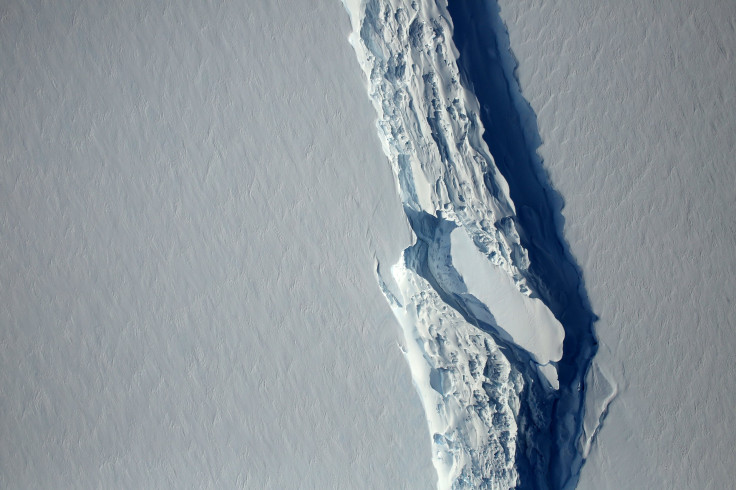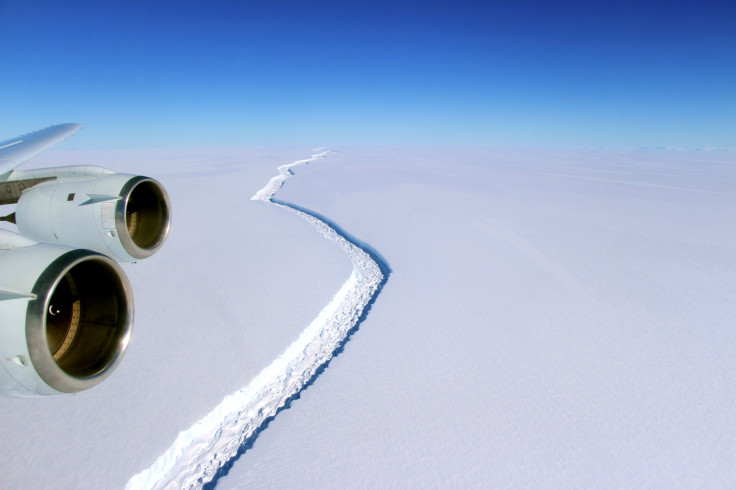Iceberg Size Of Delaware Breaking, What Sunk Titanic Plus Other Iceberg Facts

An iceberg the size of Delaware is breaking off from the Antarctic Peninsula and it could make its great separation any day now.
It was reported a few months ago that a crack in the Larsen C ice shelf was growing, and only needed to stretch another dozen miles before the chunk broke off. Scientists did not link the iceberg’s coming independence from the ice shelf to climate change, as it can be a natural event that air temperatures do not affect. And because it will be one of the biggest of such calving events ever observed, it’s hard to say how it will affect the ecosystem, although it could weaken the rest of the ice shelf and make it prone to further breakage.
Read: Antarctic Ice Melt Will Help Invasive Species
In the absence of solid predictions about this iceberg’s future, here are some facts about icebergs in general.
Battle of the ices
An iceberg and sea ice are not the same thing. While sea ice is frozen water in the ocean, icebergs are chunks of ice that formed on land but are now bobbing around the ocean or another large body of water, according to the National Snow and Ice Data Center. They are at least 16 feet across — smaller chunks of ice are classified differently — and are most commonly found in the North Atlantic Ocean or around Antarctica.
“Icebergs come in all shapes and sizes, from ice-cube-sized chunks to ice islands the size of a small country,” the center says. “Icebergs form when chunks of ice calve, or break off, from glaciers, ice shelves, or a larger iceberg. Icebergs travel with ocean currents, sometimes smashing up against the shore or getting caught in shallow waters.”

It’s all an illusion
Even when it looks like there is a massive mound of ice floating through the ocean, it’s just an iceberg illusion — much more cold horror lies beneath the surface. The large majority of an iceberg is below water, perhaps 85 percent of it, according to the United States Coast Guard. That has to do with the buoyancy of the ice, and the amount of water it is displacing. So even if an iceberg in front of you looks like a mountain, it could be what’s beneath the surface that counts.
Icebergs have scientific value
That’s even after they break off from a glacier. Scientists can study the icebergs to learn more about why they broke off and can watch their behavior in warmer water to learn about how glaciers in Antarctica would respond to higher temperatures, for example. The National Snow and Ice Data Center also says that icebergs melting in warmer water are adding cold freshwater to the ocean, which “can influence currents and ocean circulation far away from their origins” and add certain nutrients that marine life can use.
Read: Dangerous Sea Ice Cancels Arctic Trip to Study Sea Ice
Did Titanic give icebergs a bad name?
Some experts say an iceberg didn't sink the Titanic, contradicting the most infamous and perhaps the most tragic sinking story of the last 100 years. They are not saying the enormous vessel didn’t strike an iceberg, rather a group has asserted in a documentary called “Titanic: the New Evidence” that a fire that burned for three weeks before the ship set off on its maiden voyage had weakened the hull and left it vulnerable.
The Titanic iceberg changed the world
Whether you can officially blame the sinking and the 1,500 casualties on a fire that weakened the ship’s hull or on the iceberg that split it open, the Titanic sinking was the main motivation for creating the International Ice Patrol, a group effort of several governments to observe icebergs and patrol oceans for them, in an attempt to keep ship lanes clear and prevent collisions, of which there have been many throughout the history of trans-Atlantic navigation. The group, led by the United States Coast Guard, still operates today.
© Copyright IBTimes 2024. All rights reserved.





















